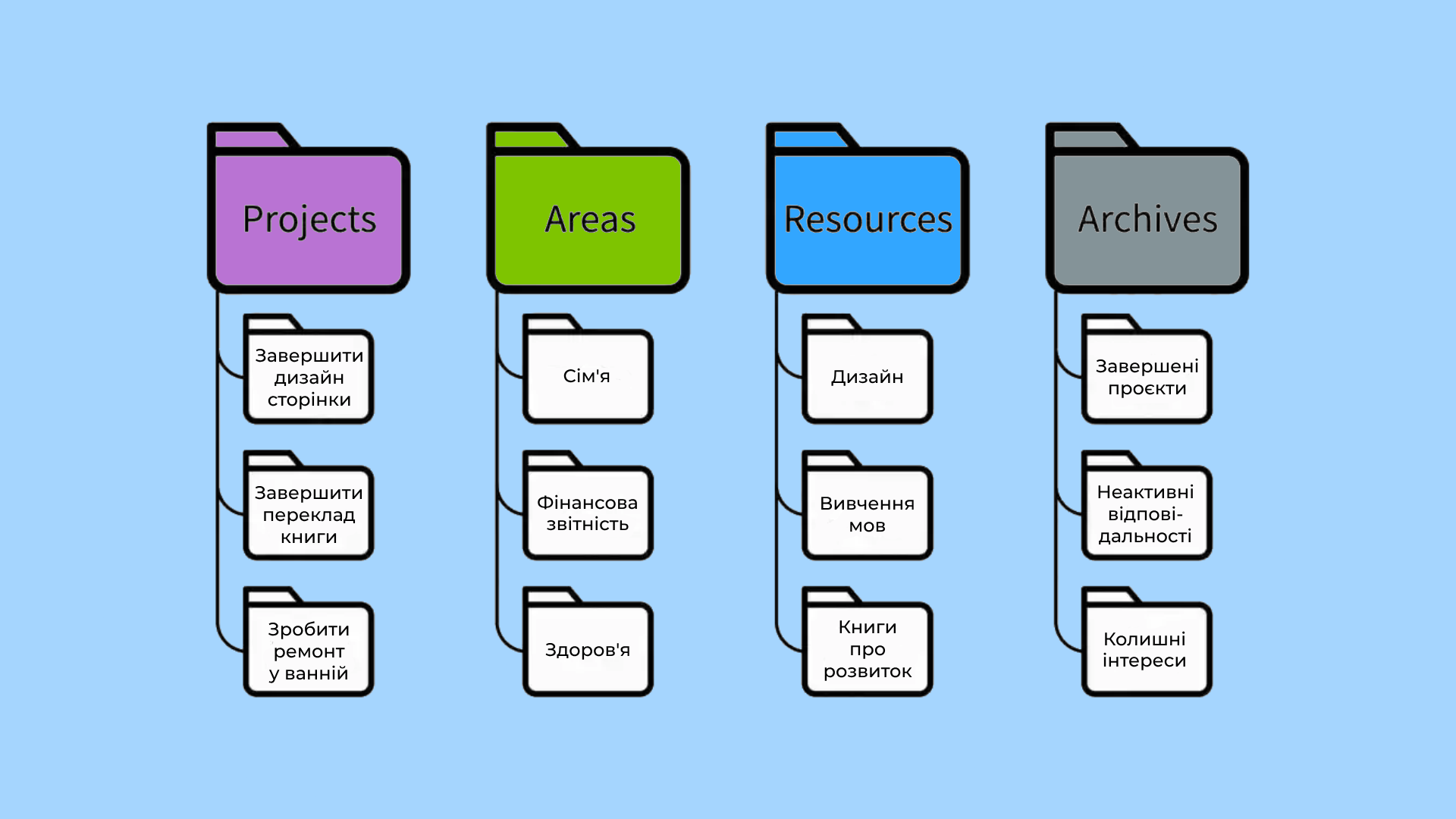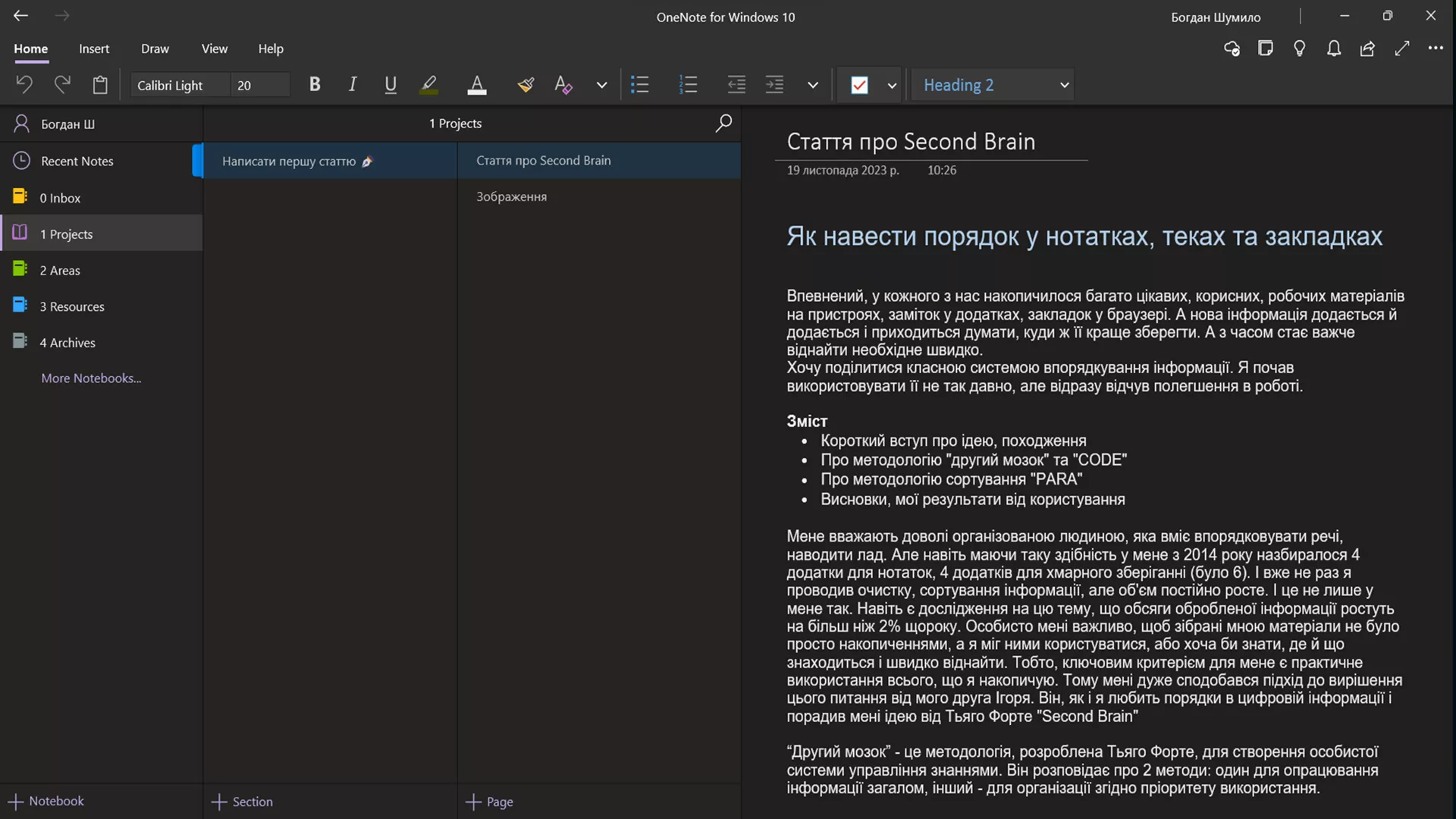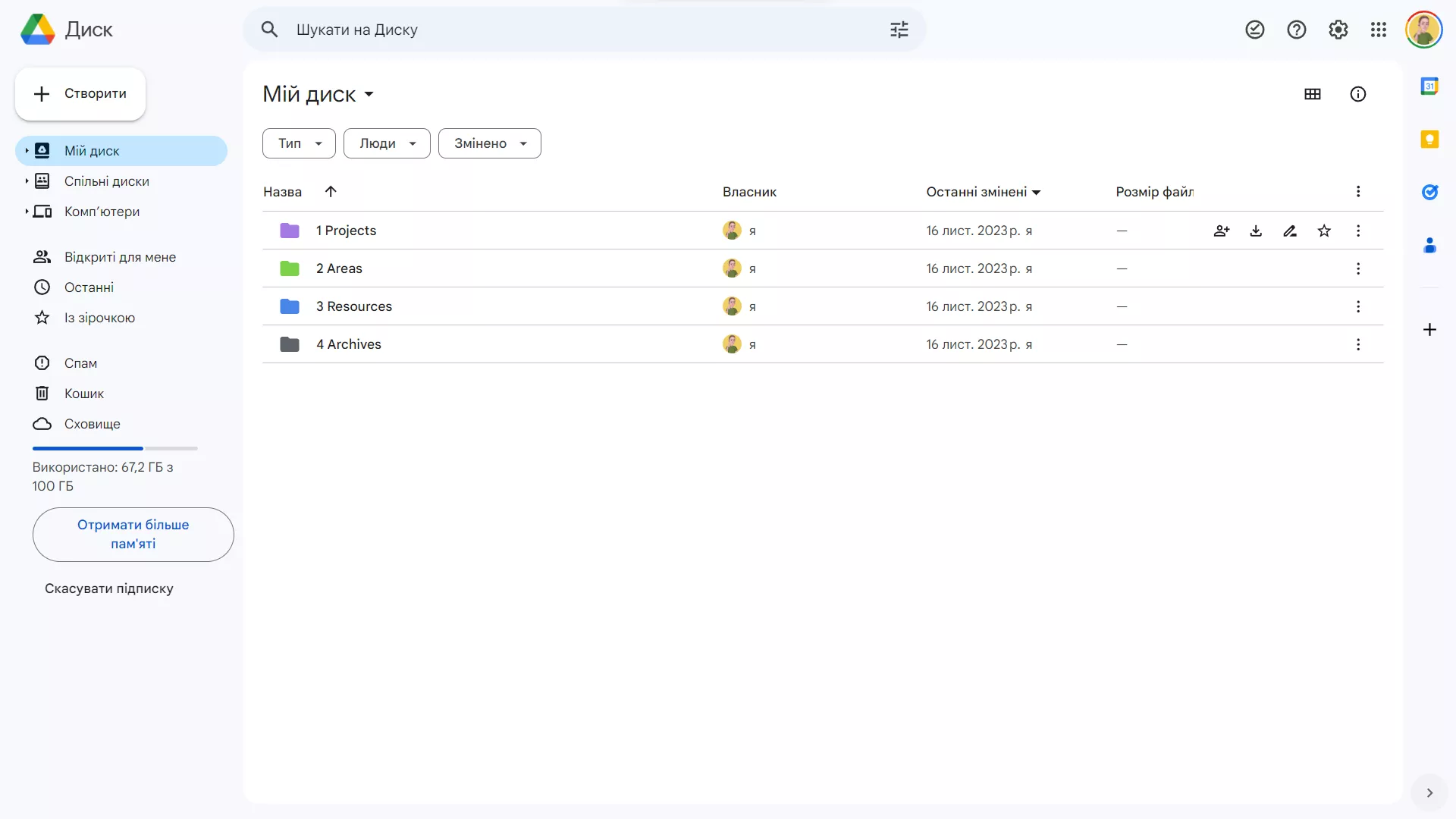03 March 2025
# Topics
How to organize your files and gadgets
03 March 2025
I'm sure everyone has accumulated a lot of interesting, useful, working materials on their devices, notes in applications.
New information is added and added and you have to think about where it is better to save it. And over time it becomes more difficult to find what you need quickly.
I want to share a cool method of interacting with information. I started using it not so long ago, but I immediately felt relief in my work.
Contents
I am considered a fairly organized person who knows how to organize things, bring order. But even with such an ability, since 2014 I have accumulated 4 applications for notes, 4 for cloud storage (there were 6). And I have already cleaned and sorted more than once, but the amount of information is constantly growing.
It is important that the materials I collect are not just accumulations, but that I can use them. I also need to know where and what is located and quickly find them. That is, the key criterion is the practical use of everything I accumulate. That is why I really liked the approach to solving this issue from my friend Igor. Like me, he loves order in digital information and advised the idea of "Second Brain".
“Second Brain” is a methodology developed by Thiago Forte to create a personal knowledge management system. One method for interacting with information in general, the other for organizing according to the priority of use.
Interaction with information
The first method, “CODE,” consists of four steps: Capture, Organize, Distill, and Express. Here’s a quick overview of the four steps:
Capture: Capture information that resonates with you and store it in a place you can manage.
Organize: Organize your action notes according to the active projects you’re working on right now.
Distill: Distill the ideas you capture and organize into your own message.
Express: Use the material you distill to express your own point of view.
This method helps you store and systematically recall the ideas, inspirations, insights, and connections you’ve gained through your experiences. It provides a clear, actionable path to creating a “second brain”—an external, centralized, digital place for the things I study and the resources they come from. That is, all the information I collect has a purpose, a use, and is not accumulated in piles.
Information organization - “PARA”
The second method of organizing is to use four categories to structure and store information. “PARA” is also an acronym made up of the first letters of these four categories: Projects, Areas, Resources, and Archives. Here’s what each of these categories means:

- Projects: These are specific tasks or goals that have a clear beginning and end
-
-
- Finish a website design
- Finish a book translation
- Do a bathroom renovation
- Write an article about "Second Brain"
- Send a gift to my brother
-
- Areas: These are areas of life or work that require constant management and attention, but have no specific end.
-
- Family
- Financial Statements
- Health
- Website Administration
-
- Resources: These are topics or areas of interest that you are studying and that may be useful for future projects.
-
- Design
- Personal Productivity
- Web Design
- Korean Language
- Notes
-
- Archives: These are all other materials that you have decided to keep, but which are not currently active. .
In my opinion, it's super simple and convenient. Now I don't have to remember where I saved materials for working with the website, where I wrote down ideas about what would be good to do.
How to choose an app for your "second brain"
I want to note that this requires some time and effort. So if you are "not up for it" right now, it is better to choose a more convenient time. It is recommended to make such changes during the period when you are making a new beginning, your employment, environment are changing. Then you have more strength and resources to put your digital information in order at the same time.
Regarding applications, everyone chooses for themselves what is convenient for them. Before making a choice, I wrote down the criteria that are important to me for work:
- reliably - It's important that everything works stably. I don't want to choose a new product that has a nice design and lots of features, but at some point this application will stop working, "hang";
- multiplatform - I also need access from a PC, phone, or even a browser, because sometimes I have one of the gadgets at hand and I want to make a note in it right away;
- offline access - I don't want to search the internet at an important moment when I need to record or review material. ;
- handwriting - this is an additional convenience with using a stylus, as I am a fan of handwriting and it looks aesthetically pleasing;
- convenient design - There should be a nice and simple interface so that I don't have to read additional instructions on how to do this or that task.
This is my list of priorities. Some people may have different requirements. After analyzing, I settled on Microsoft's OneNote service, which I've been using since 2014.
We organize everything we have
- Create a folder "4 Archives" and move everything you have there.
- Then - a folder "1 Projects" and move everything there that has specific tasks and deadlines. For example, "buy a winter jacket", "write tags for the article".
- Next, create a folder "2 Areas" and move there those things that you have to do on a regular basis, or that are an integral part of your life. For example: "Family", "Finances", "Site Administration". That is, things that do not have a clear completion date. This includes dreams, hobbies, etc.
- Finally, create a folder "3 Resources" and move there what interests you in the near future, the quality of the idea, a kind of library that you plan to refer to from time to time.

Inactive items from “Projects”, “Areas”, “Resources” should remain in the archives. The numbers at the beginning help to sort the folders in ascending or descending order.
After such an organization, I focused and wrote out all the things that were in my head and added what was not there.
Such sorting helps to highlight the things that need to be focused on right now. It is advisable to leave 10-15 items in “Projects”. If there are more, you will not be able to track them properly and see visible results. In this case, it is highly recommended to move them to a separate folder “Upcoming Projects”. I personally have less than 10 of them.
As for me, it is quite convenient and simple. And the main thing is flexibility. I can easily move something from “Areas” when it grows into a clear task. Or vice versa, when a task is postponed for an indefinite period, it can be moved to “Areas”. Also, completed work does not disappear anywhere - we simply move it to “Archives”. That is, we always start from what is currently a priority, what I need to work with now. .
Lifehacks
- This same method of organization can be applied to your cloud drive (Google Drive, OneDrive, iCloud…), on your PC, even to your browser bookmarks.
- To quickly save information, you can create an Inbox folder - "0 Inbox". And during the analysis of the week, sort its contents by category.
- You can add thematic Emoji to the names of projects to visually find what you need faster .

In fact, there are more subtleties of adjusting this technique for yourself. You can read about them in a book or articles on the author's website. Or watch various videos on YouTube (mostly in English). I started with a simple one and it has already saved me time and effort.
 EN
EN  УКР
УКР  POL
POL